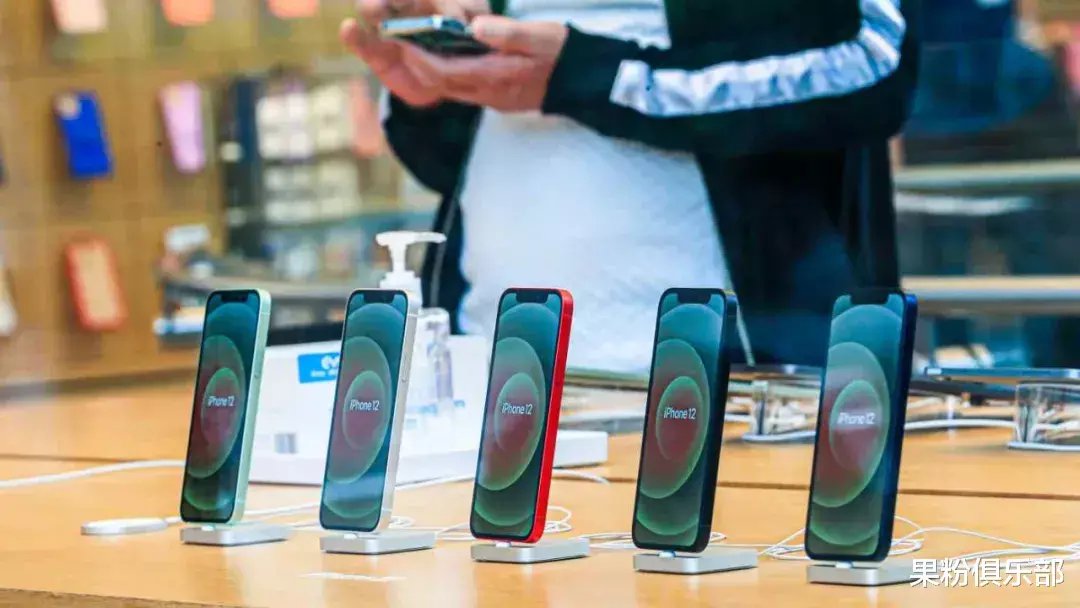PS:本文系转载文章,阅读原文可读性会更好,文章末尾有原文链接
ps:本篇文章是基于 Android Api 26 来分析的
目录
1、LayoutInflater 创建 View 过程
1、1 LayoutInflater 的 rInflate(该方法有5个参数) 方法分析 1、2 LayoutInflater 的 parseInclude(该方法有4个参数) 方法分析 1、3 LayoutInflater 的 createViewFromTag 方法分析1、LayoutInflater 创建 View 过程
1、1 LayoutInflater 的 rInflate(该方法有5个参数) 方法分析
我们接着Android中的LayoutInflater分析(一)这篇文章继续分析,我们看回 LayoutInflater 的 inflate(XmlPullParser parser, @Nullable ViewGroup root, boolean attachToRoot) ;
public View inflate(XmlPullParser parser, @Nullable ViewGroup root, boolean attachToRoot) {
synchronized (mConstructorArgs) {
......
try {
......
if (TAG_MERGE.equals(name)) {
......
//18、
rInflate(parser, root, inflaterContext, attrs, false);
} else {
// Temp is the root view that was found in the xml
//19、
final View temp = createViewFromTag(root, name, inflaterContext, attrs);
......
// Inflate all children under temp against its context.
//23、
rInflateChildren(parser, temp, attrs, true);
......
}} catch (XmlPullParserException e) {
......
} catch (Exception e) {
......
} finally {
......
}return result;
}}
还记得前一篇文章Android中的LayoutInflater分析(一)所说的吗?注释18 的代码和注释23 的代码本质上都是解析子标签,只是参数不一样而已,都是调用 LayoutInflater 的 rInflate(XmlPullParser parser, View parent, Context context,AttributeSet attrs, boolean finishInflate) 方法,看注释18 方法的第二个参数 root 和 注释23 方法的第二个参数 temp 是不一样的,当要解析的 xml 文件的开始标签是 merge 时,根标签就是 root,当要解析的 xml 文件的开始标签不是 merge 时,根标签就是 temp;看注释18 方法的第五个参数 root 和 注释23 方法的第四个参数 temp 是不一样的,为 true 时,表示要回调父元素(父元素是 ViewGroup 或者继承于 ViewGroup)的 onFinishInflate 方法,root 作为参数之一,在 LayoutInflater 的 inflate(XmlPullParser parser, @Nullable ViewGroup root, boolean attachToRoot) 方法被调用之前早就创建好了,所以 root 的 onFinishInflate 方法早就被调用过了,所以注释18 的方法的第五个参数为 false,temp 是在 LayoutInflater 的 inflate(XmlPullParser parser, @Nullable ViewGroup root, boolean attachToRoot) 方法调用的过程中创建的,才刚创建好 temp,所以 temp 的 onFinishInflate 方法还没被调用过,所以注释23 方法的第四个参数为 true。
我们看一下 LayoutInflater 的 rInflate(XmlPullParser parser, View parent, Context context,AttributeSet attrs, boolean finishInflate) 方法;
void rInflate(XmlPullParser parser, View parent, Context context,
AttributeSet attrs, boolean finishInflate) throws XmlPullParserException, IOException {
......
while (((type = parser.next()) != XmlPullParser.END_TAG ||
parser.getDepth() > depth) && type != XmlPullParser.END_DOCUMENT) {
......
if (TAG_REQUEST_FOCUS.equals(name)) {
......
} else if (TAG_TAG.equals(name)) {
parseViewTag(parser, parent, attrs);
//30、
} else if (TAG_INCLUDE.equals(name)) {//31、
if (parser.getDepth() == 0) {
throw new InflateException("}
看注释30 的代码,判断解析的标签是是否 include;注释31 的代码,判断解析的当前标签的深度是否为0,也就是当前标签是否有父标签,如果深度为0表示没有父标签,那么就会抛出异常,因为 include 标签不可以作为一个 xml 文件的根标签,这个大家都知道的;注释32 的代码是具体解析 include 标签的方法,后面再说;我们知道 LayoutInflater 的 rInflate(XmlPullParser parser, View parent, Context context,At-tributeSet attrs, boolean finishInflate) 方法是解析子标签用的,看注释33 的代码,如果子标签为 merge,那么就抛出异常;看注释34 的代码,finishInflate 为 true,就会调用 ViewGroup(只要是父标签,那么它一定是 ViewGroup,这个不用怀疑的) 的 onFinishInflate 方法,这篇文章的上面有说的。
1、2 LayoutInflater 的 parseInclude(该方法有4个参数) 方法分析
我们看回注释32 的代码,也就是 LayoutInflater 的 parseInclude(XmlPullParser parser, Context context, View parent,AttributeSet attrs) 方法;
private void parseInclude(XmlPullParser parser, Context context, View parent,
AttributeSet attrs) throws XmlPullParserException, IOException {
int type;
if (parent instanceof ViewGroup) {
// Apply a theme wrapper, if requested. This is sort of a weird
// edge case, since developers think the overwrites
// values in the AttributeSet of the included View. So, if the
// included View has a theme attribute, we'll need to ignore it.
//35、
final TypedArray ta = context.obtainStyledAttributes(attrs, ATTRS_THEME);
......
// If the layout is pointing to a theme attribute, we have to
// massage the value to get a resource identifier out of it.
//36、
int layout = attrs.getAttributeResourceValue(null, ATTR_LAYOUT, 0);
......
//37、
if (layout == 0) {
final String value = https://www.it610.com/article/attrs.getAttributeValue(null, ATTR_LAYOUT);
throw new InflateException("You must specify a valid layout "
+ "reference. The layout ID " + value + " is not valid.");
} else {//38、
final XmlResourceParser childParser = context.getResources().getLayout(layout);
try {
......
//39、
if (TAG_MERGE.equals(childName)) {
// The tag doesn't support android:theme, so
// nothing special to do here.
rInflate(childParser, parent, context, childAttrs, false);
} else {
final View view = createViewFromTag(parent, childName,
context, childAttrs, hasThemeOverride);
......
}
} finally {
childParser.close();
}
}
} else {
throw new InflateException(" }
注释35 的代码表示提取出 include 的 thme 属性,如果设置了 them 属性,那么 include 包裹的 View 设置的 theme 无效;注释36 的代码表示通过 include 标签的 layout 属性获取到一个 子布局 xml 文件的 id;注释37 的代码,如果 layout 的 id 为0,证明没有给 include 标签设置 layout 属性,那么就会抛出异常;注释38 的代码表示通过子布局 xml 的 id 创建一个 XmlResourceParser 对象;看注释39 的代码,如果子布局 xml 文件的根标签是 merge,那么又调用到 LayoutInflater 的 rInflate(XmlPullParser parser, View parent, Context context,AttributeSet attrs, boolean finishInflate) 方法,这样就通过 LayoutInflater 的 rInflate(XmlPullParser parser, View parent, Context context,AttributeSet attrs, boolean finishInflate) 方法进行不停的解析标签。
1、3 LayoutInflater 的 createViewFromTag 方法分析
好了,上面说了解析标签的过程,这里我们分析一下 View 的创建过程,看回注释19 的代码,也就是 LayoutInflater 的 createViewFromTag(View parent, String name, Context context, AttributeSet attrs) 方法看起;
图片
看注释40 的代码,LayoutInflater 的 createViewFromTag(View parent, String name, Context context, AttributeSet attrs) 方法又调用了 LayoutInflater 的 createViewFromTag(View parent, String name, Context context, AttributeSet attrs,boolean ignoreThemeAttr) 方法;
View createViewFromTag(View parent, String name, Context context, AttributeSet attrs,
boolean ignoreThemeAttr) {
......
try {
View view;
//41、
if (mFactory2 != null) {
view = mFactory2.onCreateView(parent, name, context, attrs);
//42、
} else if (mFactory != null) {
view = mFactory.onCreateView(name, context, attrs);
} else {
view = null;
}//43、
if (view == null && mPrivateFactory != null) {
view = mPrivateFactory.onCreateView(parent, name, context, attrs);
}if (view == null) {
......
try {
if (-1 == name.indexOf('.')) {//44、
view = onCreateView(parent, name, attrs);
} else {//45、
view = createView(name, null, attrs);
}
} finally {
mConstructorArgs[0] = lastContext;
}
}
return view;
} catch (InflateException e) {
......
} catch (ClassNotFoundException e) {
......
} catch (Exception e) {
......
}}
注释42、43、44、45 的代码我就不分析了,我分析的是一个呈现界面的类直接继承 AppCompatActivity 而不是直接继承 Activity,所以最终会走注释41 的代码,mFactory2 对象的实现类到底是什么,可以看Android中的AppCompatActivity的偷梁换柱之UI偷换这篇文章,Android中的AppCompatActivity的偷梁换柱之UI偷换拿的是 AppCompatDelegateI-mplV9 来分析,而我们用的是 API 26 的来分析,拿的是 AppCompatDelegateImplN 来分析,那岂不是不一样吗?其实它们实例化并赋值给 mFactory2 的过程是一样的,AppCompatDelegateImplN 间接继承于 AppCompatDelegateImplV9,而且 AppCompatDelegateImp-lN 也没有重写 onCreateView(View parent, String name, Context context, AttributeSet attrs) 方法,onCreateView(View parent, String name, Context context, AttributeSet attrs) 方法仍然在 AppCompatDelegateI-mplV9 中实现;注意这里我分析的是用 Activity 为上下文创建 View 的思路,别搞错了,为了防止搞混淆,我列举一下用 Activity 为上下文创建 View 的代码;
//46、
View view = LayoutInflater.from(activity).inflate(R.layout.item_1,null,false);
注释46 中的 LayoutInflater.from(activity) 代码最终会调用到 Activity 的 PhoneLayoutInflater 对象中的 cloneInContext(Context newContext)方法,可以看Android中的LayoutInflater分析(一)这篇文章追踪一下,然后通过 Activity 的 PhoneLayoutInflater 对象的 cloneInContext(Co-ntext newContext) 方法构建一个新的 PhoneLayoutInflater 对象并将 Activity 的 PhoneLayoutInflater 对象中的 mFactory2 赋值给新的 PhoneLayoutInflater 中的 mFactory2。
我们看回注释41 if 语句下的代码,也就是 AppCompatDelegateImplV9 的 onCreateView(View parent, String name, Context context, AttributeSet attrs) 方法;
图片
看注释47 的代码,AppCompatDelegateImplV9 的 onCreateView(Vie-w parent, String name, Context context, AttributeSet attrs) 方法又调用 AppCompatDelegateImplV9 的 createView(View parent, final String name, @NonNull Context context,@NonNull AttributeSet attrs) 方法;
@Override
public View createView(View parent, final String name, @NonNull Context context,
@NonNull AttributeSet attrs) {
......
//48、
return mAppCompatViewInflater.createView(parent, name, context, attrs, inheritContext,
IS_PRE_LOLLIPOP, /* Only read android:theme pre-L (L+ handles this anyway) */
true, /* Read read app:theme as a fallback at all times for legacy reasons */
VectorEnabledTintResources.shouldBeUsed() /* Only tint wrap the context if enabled */
);
}看注释48 的代码,mAppCompatViewInflater 是 AppCompatViewInfla-ter 类型的对象,这里又调用 AppCompatViewInflater 的 createView(View parent, final String name, @NonNull Context context,@NonNull AttributeSet attrs, boolean inheritContext,boolean readAndroidTheme, boolean readAppTheme, boolean wrapContext) 方法;
public final View createView(View parent, final String name, @NonNull Context context,
@NonNull AttributeSet attrs, boolean inheritContext,
boolean readAndroidTheme, boolean readAppTheme, boolean wrapContext) {
......
View view = null;
// We need to 'inject' our tint aware Views in place of the standard framework versions
//49、
switch (name) {
case "TextView":
view = new AppCompatTextView(context, attrs);
break;
......
}if (view == null && originalContext != context) {
// If the original context does not equal our themed context, then we need to manually
// inflate it using the name so that android:theme takes effect.
//50、
view = createViewFromTag(context, name, attrs);
}
......
return view;
}
看注释49 的代码,如果是系统的标签,那么直接通过 new 关键字创建一个 View 对象;如果不是系统标签,那么就走注释50 的代码,也就是 AppCo-mpatViewInflater 的 createViewFromTag(Context context, String name, AttributeSet attrs) 方法;
private View createViewFromTag(Context context, String name, AttributeSet attrs) {
......
try {
......
if (-1 == name.indexOf('.')) {
for (int i = 0;
i < sClassPrefixList.length;
i++) {//51、
final View view = createView(context, name, sClassPrefixList[i]);
if (view != null) {
return view;
}
}
return null;
} else {//52、
return createView(context, name, null);
}
} catch (Exception e) {
......
} finally {
......
}}
注释52 的代码通过自定义的标签创建 View,第3个参数 null 表示标签不需要放前缀,因为自定义的标签它原本就带好了前缀,所以不需要再添加;注释51 的代码表示通过系统标签创建 View,写 xml 布局时系统标签时没有前缀,所以这里创建 View 之前要添加标签前缀,我们看看一般常用的系统标签的前缀集合 sClassPrefixList 存放的数据;
private static final String[] sClassPrefixList = {
"android.widget.",
"android.view.",
"android.webkit."};
我们一般常用的系统标签放在 widget、view 和 webkit 这3个包下面;我们看注释51、52 的代码,也就是 AppCompatViewInflater 的 createView(C-ontext context, String name, String prefix) 方法;
private View createView(Context context, String name, String prefix)
throws ClassNotFoundException, InflateException {
Constructor constructor = sConstructorMap.get(name);
try {
if (constructor == null) {
// Class not found in the cache, see if it's real, and try to add it
Class clazz = context.getClassLoader().loadClass(
prefix != null ? (prefix + name) : name).asSubclass(View.class);
constructor = clazz.getConstructor(sConstructorSignature);
sConstructorMap.put(name, constructor);
}
constructor.setAccessible(true);
return constructor.newInstance(mConstructorArgs);
} catch (Exception e) {
// We do not want to catch these, lets return null and let the actual LayoutInflater
// try
return null;
}}
【Android中的LayoutInflater分析(二)】AppCompatViewInflater 的 createView(Context context, String name, String prefix) 方法最终通过反射机制创建一个 View 对象;如果在 xml 布局文件中写入一个不存在的标签(不是系统标签,也不是自定义标签),那么就会返回一个空的 View 对象。
推荐阅读
- Android黑科技(如何启动未注册的Activity)
- Android中的LayoutInflater分析(一)
- Android中Application、Activity和Service它们真正干活的Context是什么()












